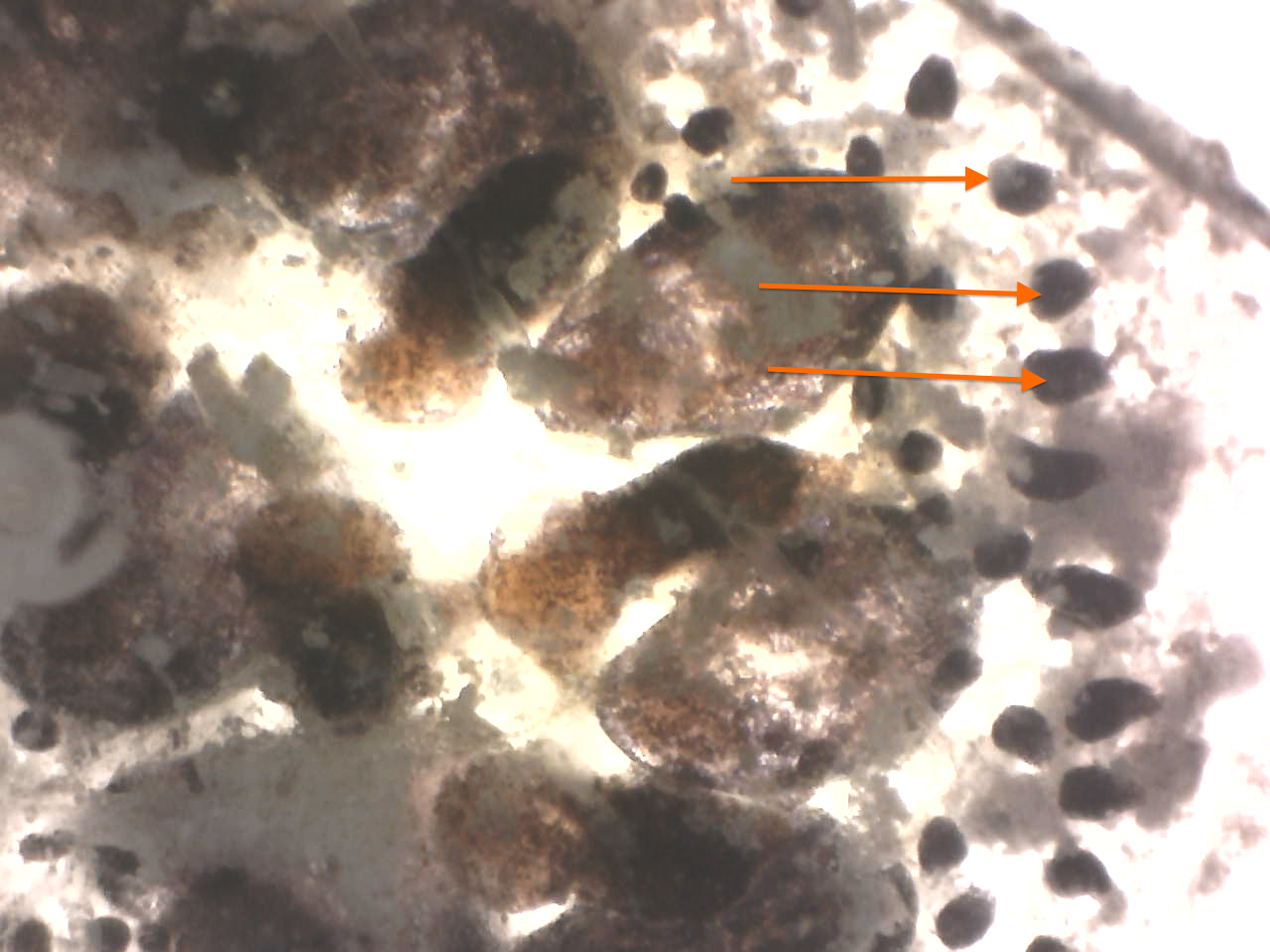Internal Transport & Movement
Just like other chordates, ascidians like B. tuberatus posses a hemal and circulatory system to allow for internal transport. Other than flow of nutrients within the individual, there are also test vessels that connect the zooids with one another (Kott 1985). This allows the flow of nutrients through the entire colony, as seen from the video below. These test vessels form a system of 3-dimensional network, with blind tubular enlargements called vascular ampullae as seen in the figure below. These can be seen as dark pigmentations around the edges of the test (Abbott & Newberry 1980; Kott 1985).
Video showing the translucent blood vessels of B. tuberatus with particles flowing through it, as seen under a microscope.
 Image showing the vascular ampullae in B. tuberatus. Picture is taken from the bottom-up view of a glass slides holding one of the B. tuberatus colonies.
Image showing the vascular ampullae in B. tuberatus. Picture is taken from the bottom-up view of a glass slides holding one of the B. tuberatus colonies. |